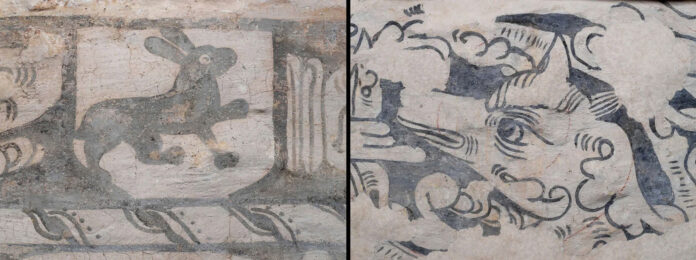Hidden Artistic Treasures Emerge in Cumbria’s Ancient Woodland Retreat
A seemingly ordinary Tudor hunting lodge nestled in Cumbria’s Inglewood Forest has revealed an extraordinary secret – rare and fantastical 16th-century wall paintings depicting mythical creatures and elaborate designs.
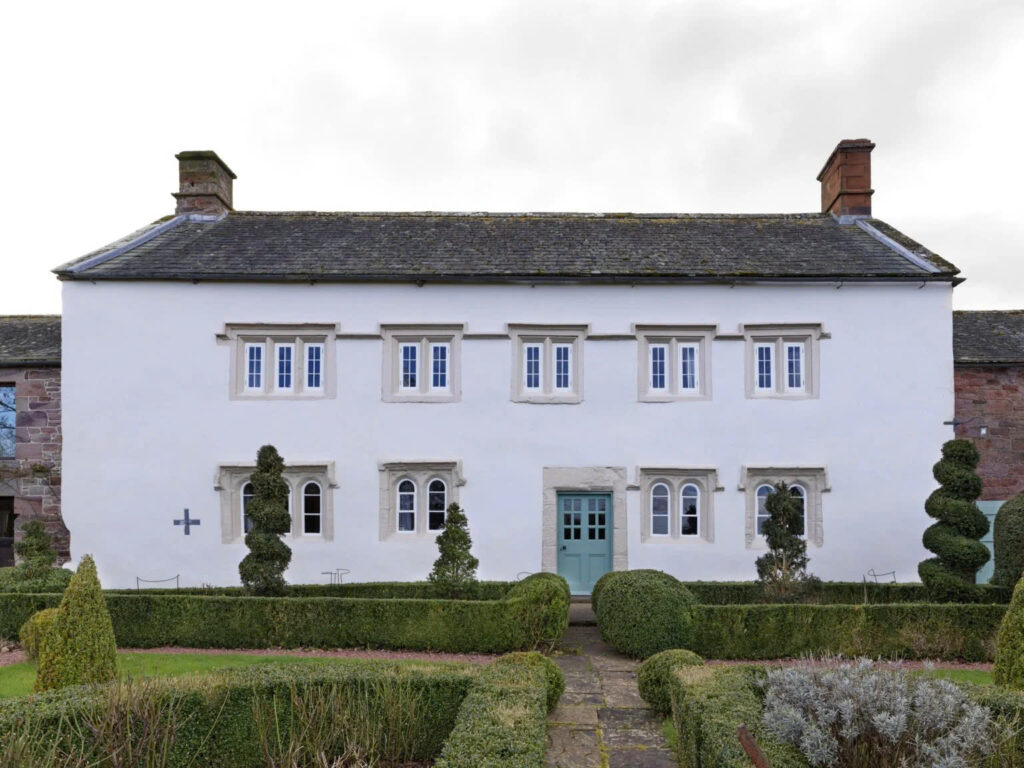
The Ashes, a two-story structure dating to the 1560s during Queen Elizabeth I’s reign, has preserved many original architectural elements including its distinctive arched stone fireplace and spiral newel staircase. Historic England researchers believe the lodge’s first inhabitants were William Simpson, a wealthy bailiff of Castle Sowerby Manor, and his family.
Decades of Discoveries Unveil a Magical Medieval Menagerie
The artistic journey began in the 1970s when the first wall paintings were uncovered on the second floor, showing what appeared to be a dog surrounded by foliage. However, more recent excavations in the 2010s and 2020s have revealed additional treasures on the ground floor – intricate floral designs concealing heraldic rabbits and striking Grotesque head profiles.
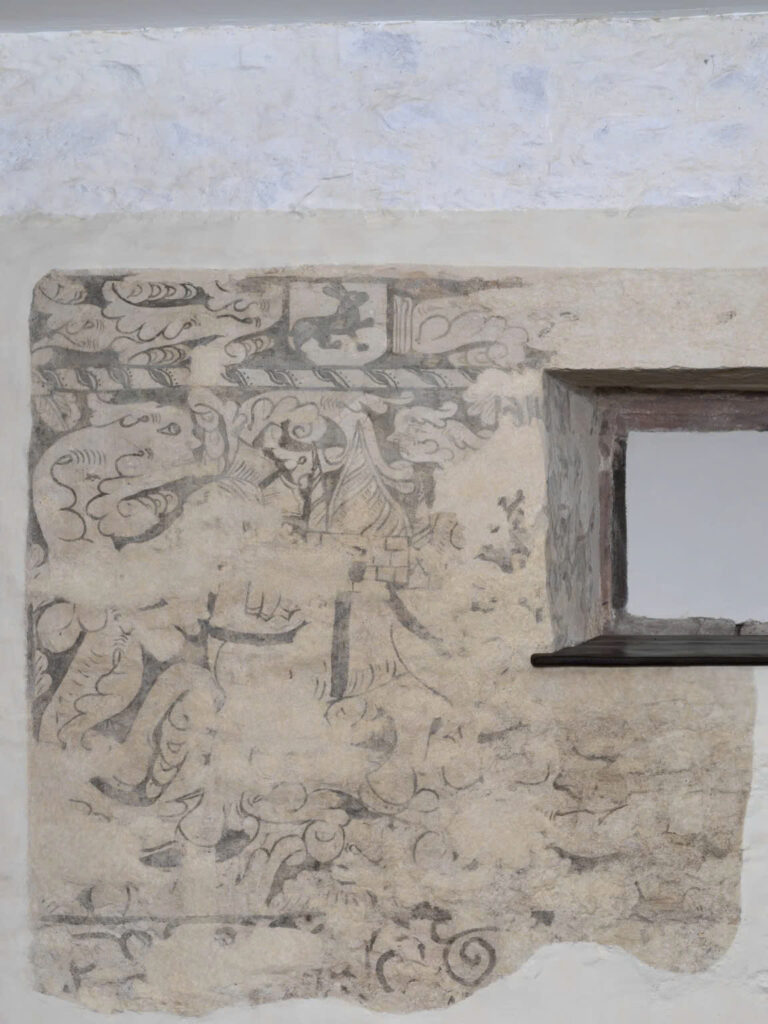
“A small fragment of wall painting—similar to that seen at nearby Dacre Hall—has been visible since we purchased the property over 20 years ago,” current owners Jen and Richard Arkell explained. “But recent work in the primary upstairs bedroom revealed much more of the composition. Removing old failing plaster to find these remarkable motifs and faces looking back at us is a moment we will never forget.”
Rare Secco Technique Preserves Ancient Artistry
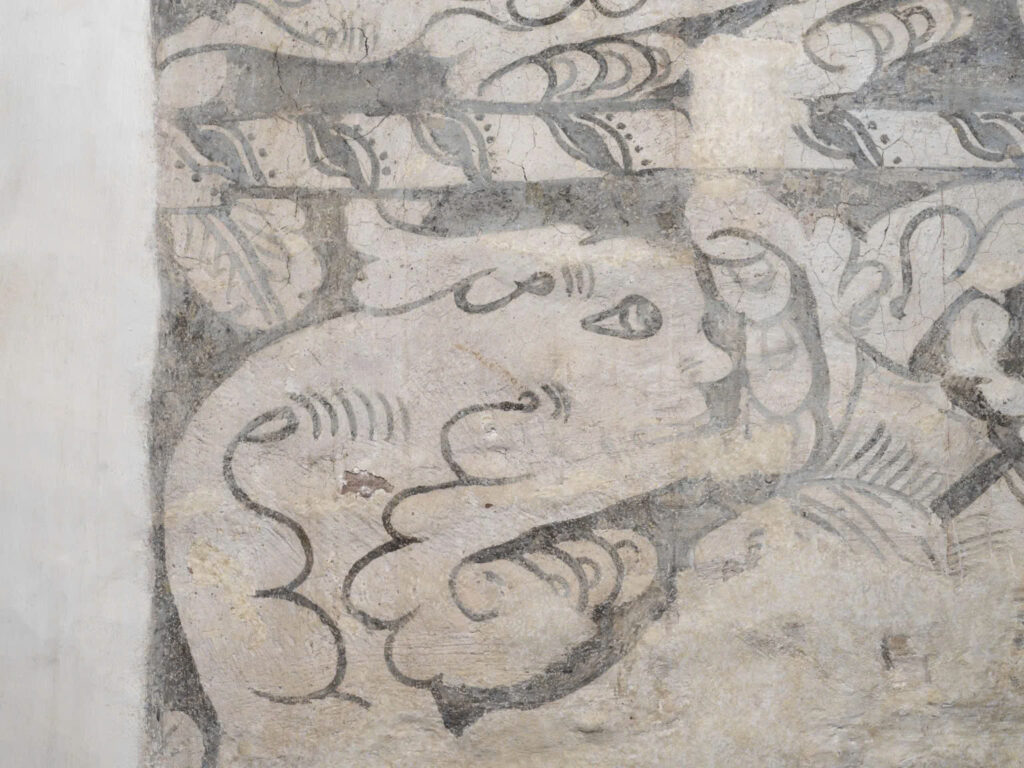
What makes these discoveries particularly significant is their creation using the secco technique – a method where pigments are applied to dry plaster using binding agents like egg yolk or glue. Unlike traditional fresco painting where colors penetrate wet plaster, secco paintings remain on the surface, allowing for detailed work and easy modifications, though they’re often more vulnerable to fading or flaking over time.
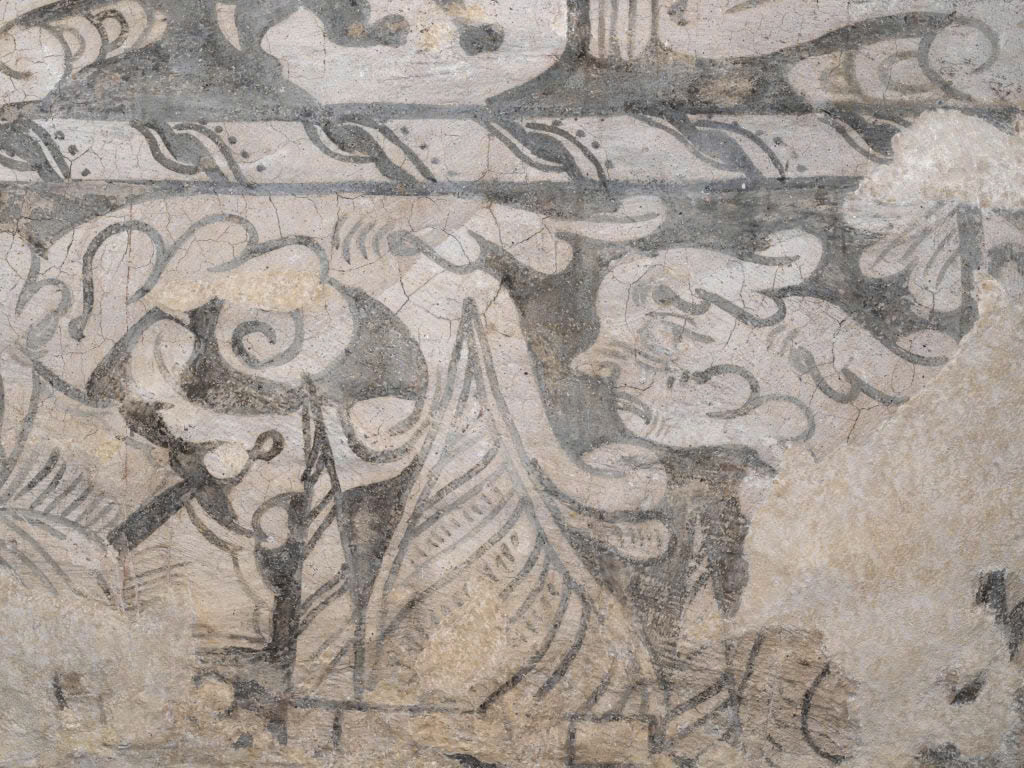
This technique has famously preserved other historical masterpieces like Giotto’s 14th-century murals in the Church of San Francesco in Assisi and Leonardo da Vinci’s iconic Last Supper in Milan.
Video
Cultural Significance Earns Protected Status

Researchers believe the decorative panels at The Ashes were likely inspired by textile designs, reflecting the sophisticated tastes of the original owners. The distinctive black-and-white Grotesque style, borrowed from ancient Roman decorative art, was characteristic of the 16th century but remains exceptionally rare for the Cumbria region.
“The combination of motifs discovered here is unusual even by national standards,” noted Myra Tolan-Smith, Historic England’s listing adviser. “Together with the newly listed farm buildings, this discovery provides remarkable insight into the evolution of a significant Tudor hunting lodge.”
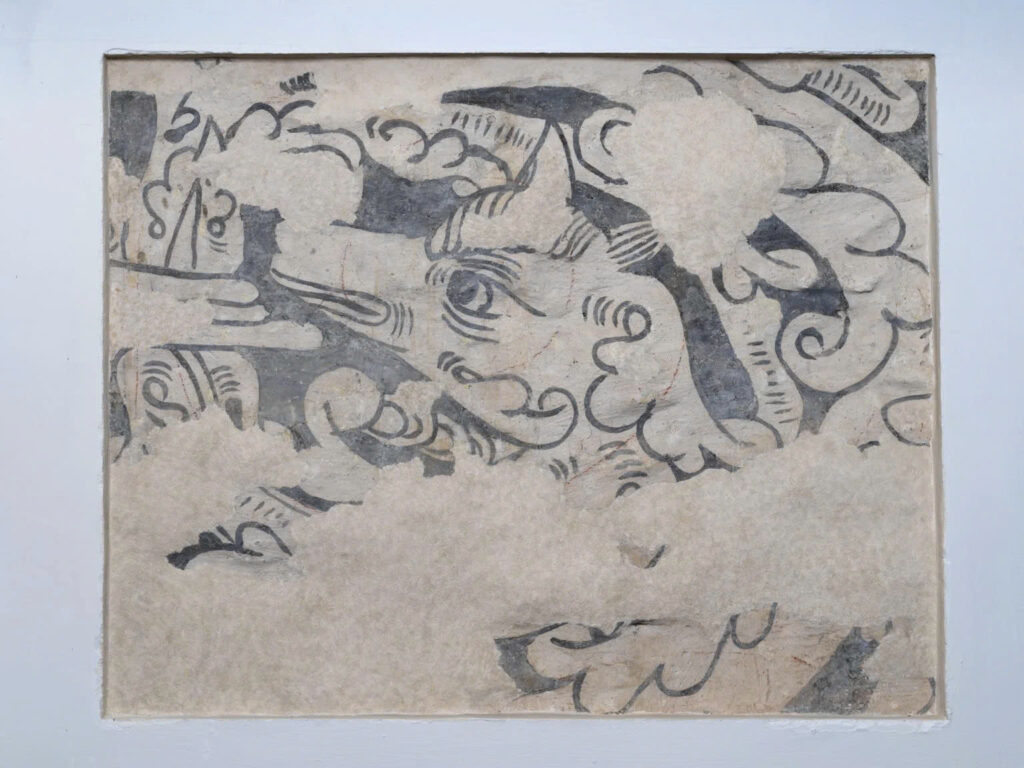
The historical and artistic importance of these findings has resulted in the building receiving protected listed status from the UK’s Department for Culture, Media and Sport, ensuring these magical medieval murals will be preserved for future generations to appreciate.
